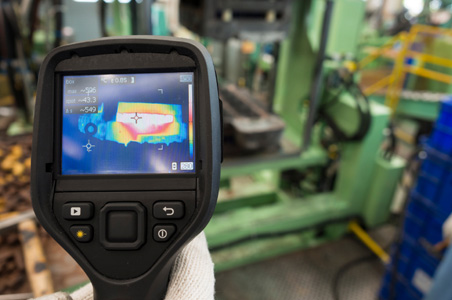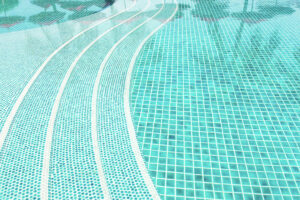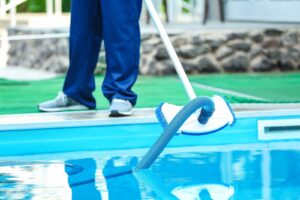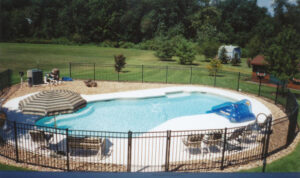Introduction:
Hidden leaks in swimming pools can be a source of frustration for pool owners, leading to water loss, increased utility bills, and potential damage to the pool structure. However, the use of thermal imaging technology has revolutionized the way pool leaks are detected and repaired. This article delves into the power of thermal imaging in pool repair, highlighting its effectiveness in uncovering hidden leaks and facilitating efficient repairs.
I. The Significance of Thermal Imaging in Pool Repair
Non-Destructive Leak Detection: Thermal imaging allows for non-destructive leak detection in swimming pools. Traditional methods often involved extensive digging or dismantling of pool components to locate leaks. With thermal imaging, pool technicians can identify leak sources by detecting temperature differentials in the pool structure without causing any damage.
Identifying Hidden Leaks: Hidden leaks, such as those occurring in underground pipes or behind pool walls, can be challenging to detect. Thermal imaging technology can penetrate the pool structure and reveal temperature anomalies associated with water leakage. This enables precise identification of hidden leaks, saving time and effort in the repair process.
Efficient Repair Planning: By accurately pinpointing the location of leaks, thermal imaging helps pool technicians plan repairs more efficiently. They can focus their efforts on the exact areas requiring attention, minimizing disruption to the pool and its surroundings. This targeted approach saves both time and resources, resulting in quicker and more cost-effective repairs.
II. The Process of Thermal Imaging in Pool Repair
Thermal Imaging Equipment: Specialized thermal imaging cameras are used in pool repair to capture thermal images. These cameras detect and measure infrared radiation emitted by objects, converting it into visible images that highlight temperature variations. Pool technicians trained in thermal imaging interpretation can analyze these images to identify potential leak areas.
Conducting the Thermal Imaging Inspection: During a thermal imaging inspection, the pool is observed using the thermal camera from various angles. The camera captures the temperature distribution across the pool’s surface, including walls, pipes, and surrounding areas. Any unusual temperature patterns or hotspots indicate potential leak sources that require further investigation.
Verifying and Repairing Detected Leaks: Once potential leak areas are identified through thermal imaging, additional verification methods, such as dye testing or pressure testing, may be used to confirm the presence of leaks. Once confirmed, appropriate repair measures can be taken, such as patching the leak, replacing damaged pipes, or sealing cracks in the pool structure.
III. Advantages and Limitations of Thermal Imaging in Pool Repair
Advantages of Thermal Imaging:
- Non-destructive detection: No need for extensive excavation or dismantling.
- Time and cost-saving: Efficiently pinpoint leaks for targeted repairs.
- Early detection: Identify leaks before they cause significant damage.
- Comprehensive assessment: Detect hidden leaks that may go unnoticed with other methods.
Limitations of Thermal Imaging:
- Surface-level detection: Thermal imaging primarily detects temperature variations on the pool’s surface and may not identify leaks in inaccessible areas.
- Environmental factors: External temperature influences and environmental conditions can affect thermal imaging accuracy.
- Professional expertise: Proper training and interpretation skills are necessary to accurately analyze thermal images and identify potential leaks.
III. Advantages and Limitations of Thermal Imaging in Pool Repair
Advantages of Thermal Imaging
Non-destructive detection: One of the significant advantages of thermal imaging is that it allows for non-destructive leak detection. Traditional methods often involved extensive digging or dismantling of pool components to locate leaks. Thermal imaging eliminates the need for such invasive procedures, saving time and minimizing disruption to the pool and its surroundings.
Time and cost-saving: By accurately pinpointing the location of leaks, thermal imaging facilitates targeted repairs, resulting in significant time and cost savings. Instead of conducting trial-and-error repairs or extensive exploratory work, pool technicians can focus their efforts on the identified areas, effectively addressing the root cause of the problem.
Early detection: Thermal imaging enables early detection of leaks before they cause significant damage to the pool structure or surrounding areas. By identifying leaks at their initial stages, pool owners can prevent more extensive repairs and potential water damage, ultimately saving them money and ensuring the longevity of their pool.
Comprehensive assessment: Thermal imaging provides a comprehensive assessment of the pool’s condition by detecting hidden leaks that may go unnoticed with other methods. It allows technicians to evaluate the entire pool structure, including walls, pipes, and equipment, providing a holistic view of any potential issues that require attention.
Limitations of Thermal Imaging (Continued):
Surface-level detection: It’s important to note that thermal imaging primarily detects temperature variations on the pool’s surface. While it can identify leaks that manifest as temperature anomalies, it may not be able to detect leaks in inaccessible areas or within buried underground pipes. In such cases, additional verification methods, like dye testing or pressure testing, may be necessary to confirm the presence of leaks.
Environmental factors: External temperature influences and environmental conditions can affect the accuracy of thermal imaging. Factors such as ambient temperature, sunlight exposure, wind, or rain can impact the temperature differentials observed by the thermal camera. It is essential for pool technicians conducting the inspection to account for these factors and interpret the thermal images accordingly.
Professional expertise: Thermal imaging requires proper training and interpretation skills to accurately analyze the captured thermal images. Pool technicians trained in thermal imaging techniques can effectively identify potential leak areas and distinguish them from other temperature variations. Investing in skilled professionals with expertise in thermal imaging ensures accurate results and maximizes the benefits of this technology.
Conclusion:
Thermal imaging has revolutionized the pool repair industry by enabling efficient and non-destructive detection of hidden leaks. Its ability to pinpoint leak sources, save time and costs, and facilitate early detection makes it a valuable tool for pool owners and technicians alike. While thermal imaging has its limitations, when used in conjunction with other verification methods and in the hands of trained professionals, it can significantly enhance the effectiveness of pool repair efforts.
Remember, Showtime Pools offers advanced thermal imaging services to uncover hidden leaks and provide precise solutions for pool repairs. With their expertise and cutting-edge technology, they can help you ensure the integrity and longevity of your swimming pool while minimizing disruptions and costs.





No comment yet, add your voice below!